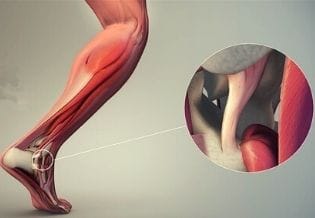Aims & Scope
Journal of Tissue Repair and Regeneration (JTRR) publishes mechanistic and translational research advancing the understanding of tissue healing, regenerative biology, and biomaterial-based therapeutic strategies across organ systems.
Scope Structure
Cellular & Molecular Mechanisms of Repair
- Cell signaling pathways in wound healing and tissue regeneration
- Stem cell biology, differentiation, and directed cell fate determination
- Extracellular matrix remodeling and fibrogenesis
- Epithelial-mesenchymal transition in tissue repair
- Apoptosis, autophagy, and cell survival mechanisms
- Growth factor biology and cytokine networks
"Mechanistic study of TGF-β signaling in myofibroblast differentiation during dermal wound healing, with in vivo validation in murine models."
Biomaterials & Scaffold Engineering
- Design and synthesis of biocompatible scaffolds for tissue regeneration
- Natural and synthetic biomaterial characterization
- 3D bioprinting and additive manufacturing for tissue constructs
- Hydrogels, nanofibers, and composite materials
- Surface modification and functionalization strategies
- Biomaterial-cell interactions and biocompatibility assessment
"Development of electrospun collagen-PCL scaffolds with controlled porosity for cartilage tissue engineering, including in vitro chondrocyte culture and mechanical testing."
Tissue Engineering & Regenerative Therapies
- Engineered tissue constructs for organ replacement
- Cardiac, neural, bone, and cartilage tissue engineering
- Vascularization strategies for engineered tissues
- Organoid development and organ-on-chip technologies
- Cell therapy approaches including MSCs and iPSCs
- Translational studies bridging bench to bedside
"Pre-clinical evaluation of vascularized cardiac patches using human iPSC-derived cardiomyocytes in a porcine myocardial infarction model."
Wound Healing & Tissue Pathophysiology
- Acute and chronic wound healing mechanisms
- Inflammation and immune responses in tissue repair
- Scar formation, fibrosis, and keloid pathogenesis
- Diabetic wounds and impaired healing models
- Tissue biomechanics and mechanobiology
- Age-related changes in regenerative capacity
"Comparative analysis of macrophage polarization in acute versus chronic diabetic wounds, with therapeutic intervention using immunomodulatory biomaterials."
Developmental Biology Insights
Embryonic development principles applied to regenerative strategies, morphogenesis, and tissue patterning mechanisms relevant to adult tissue repair.
Advanced Imaging & Biomedical Technologies
Novel imaging modalities for tracking tissue repair, laser capture microdissection, immunofluorescence techniques, and real-time monitoring of regeneration.
Gene Therapy & Molecular Engineering
Genetic engineering approaches for enhanced regeneration, CRISPR applications, gene delivery systems, and regulation of gene expression in tissue repair.
Nanotechnology Applications
Nanomaterial-based drug delivery, nanofiber scaffolds, quantum dots for cell tracking, and nano-scale surface modifications for enhanced bioactivity.
Computational & AI-Driven Approaches
Machine learning for predicting regenerative outcomes, computational modeling of tissue mechanics, AI-assisted biomaterial design, and bioinformatics in regenerative medicine.
Reconstructive Surgery Integration
Surgical techniques combined with regenerative approaches, biomaterial applications in reconstructive procedures, and clinical translation of tissue engineering.
Tooth & Dental Regeneration
Requires strong mechanistic focus
Plant Tissue Culture
Only if comparative biology insights apply to animal systems
Bioprocess Engineering
When directly relevant to tissue manufacturing
Cord Blood Applications
Focus on regenerative cell therapy aspects
Article Types & Editorial Priorities
Fast-Track Review
Editorial Standards & Requirements
Reporting Guidelines
Adherence to ARRIVE (animal studies), CONSORT (clinical trials), STROBE (observational), PRISMA (reviews), and MIQE (qPCR) standards required.
Data Transparency
Raw data deposition in public repositories encouraged. Data availability statements mandatory. Supplementary materials for protocols and datasets.
Ethics Compliance
IRB/IACUC approval required for human/animal studies. Informed consent documentation. Declaration of Helsinki and NIH guidelines adherence.
Preprint Policy
Preprint deposition on bioRxiv, medRxiv, or arXiv permitted and encouraged. Does not affect consideration for publication in JTRR.
Decision Metrics & Publication Timeline
Ready to Submit Your Research?
If your work advances mechanistic understanding of tissue repair, develops innovative biomaterials, or translates regenerative strategies toward clinical application, JTRR is your publication home.
Submit Manuscript

